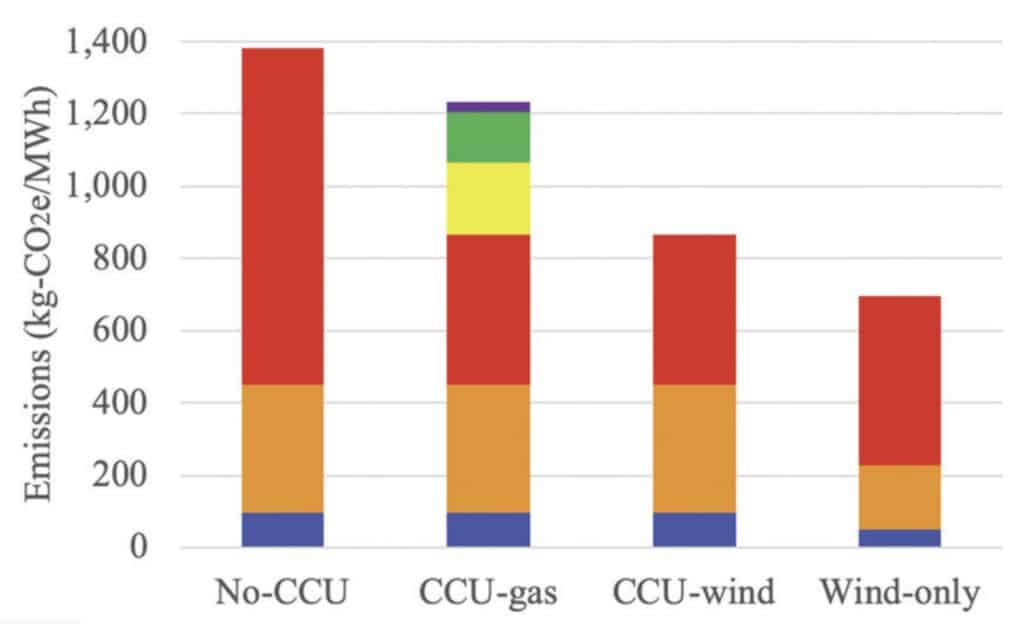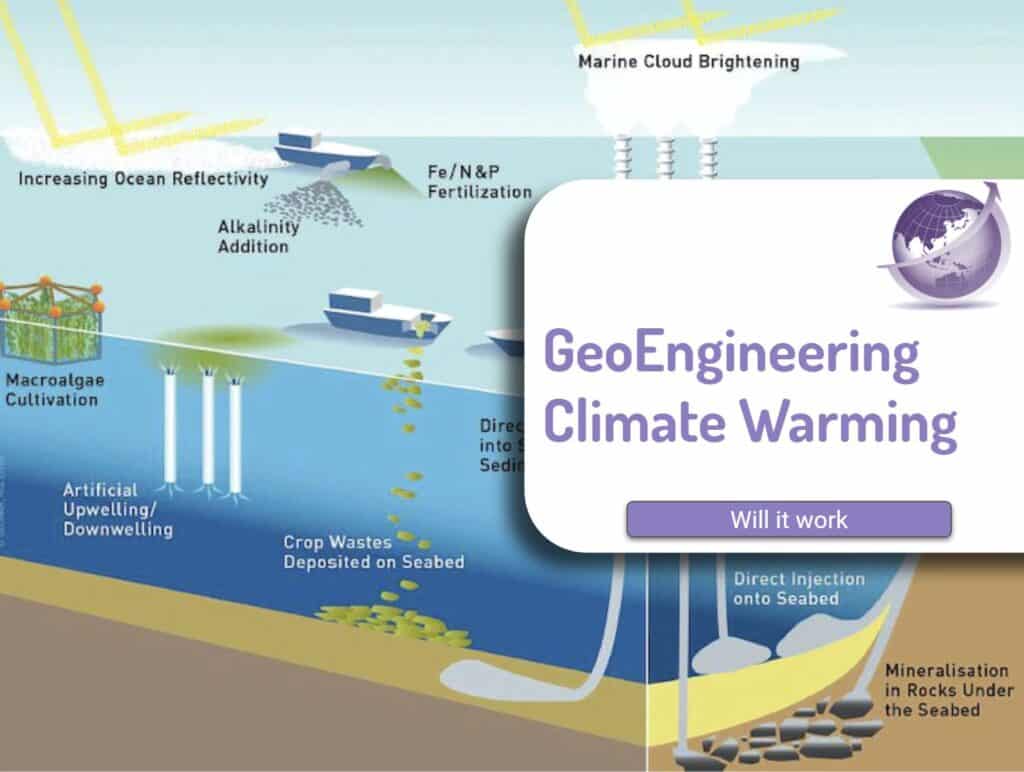Carbon capture and storage (CCS) process aims to mitigate climate change by capturing carbon dioxide emissions from industrial processes, power generation, or other sources, and then storing them in underground geological formations or other secure storage locations. The purported purpose of CCS is to prevent the release of CO2 into the atmosphere, which is a major contributor to global warming and climate change.
Carbon Capture and Storage is a Failed Technology
The reality is CCS is a scam concocted by the fossil fuel industry to delay stopping burning rocks.
“When an energy technology is consistently shown not to work, but can attract subsidies, you can be sure there are lobbyists and greenwashing at play. The oil and gas industry are harvesting subsidies to prolong the life of their operations, not for emissions reduction
Bruce Robertson. Institute of Energy Economics and Financial Analysis (IEEFA)
However, research by Prof Mark Jacobson on the Petra Nova plant in Texas and published in the Journal of Energy and Environmental Science found CCS reduces only a small fraction of carbon emissions, and it usually increases air pollution. Even if you have 100% capture from the capture equipment, it is still worse, from a social cost perspective, than replacing a coal or gas plant with a wind farm. CCS never reduces air pollution and always has a capture equipment cost.
The Australia Gorgon project, the Texas Nova CSS and the Canadian oil and gas CCS are discussed in detail below.
For a recent article (July 2024) check out Oil companies sold the public on a fake climate solution, and swindled taxpayers out of billions [9] from Vox.
Does CCS Stack up Against Other Emissions Reduction Strategies
Reducing CO2 with wind and solar is the most effective and able to reduce by 2 to 7 Gt CO2 per year . CCS is unable to contribute more than about 0.5Gt, and progress to date is a fraction of that,

How CCS Works
The CCS process typically involves three steps: capture, transport, and storage. During the capture phase, CO2 is captured from industrial processes or power plants before it is released into the atmosphere. There are several different capture technologies, including pre-combustion capture, post-combustion capture, and oxyfuel combustion.

Once the CO2 is captured, it is transported to a storage location and then injected into the underground structure. Sometimes this injection is recover more oil or gas, or sometimes just storage.
There is considerable additional fossil fuel needed to drive this CCS process. Jacobson calculates that the additional emissions for the additional energy required for the process can exceed the CO2 sequestered.
Global CCS Projects
CCS technology has been in operation for half a century, from when the Terrell Natural Gas Processing plant was commissioned in 1972 in Texas, U.S. Despite its maturity, CCS has proved an unreliable technology in most cases.
The CCS Institute has a database of commercial and pilot projects globally. There are 35 operational / operating CCS plants.

Top 10 CCS Projects
| Project | State | Country | Purpose |
| Acorn | UK | UK | Aims to use existing oil and gas infrastructure to capture CO2 emissions from industrial sources and store them in depleted offshore oil and gas reservoirs. |
| Bounday Dam | Saskatchewan | Canada | Operated by SaskPower. The world's first commercial-scale coal-fired power plant with CCS, which captures CO2 emissions and uses them for enhanced oil recovery. |
| Gorgon | Western Australia | Australia | Gorgon Project is one of the world's largest natural gas projects. (see below) |
| Kemper County | Missippi | USA | Coal gasification which captures CO2 emissions and uses them for enhanced oil recovery. |
| Petra Nova | Texas | USA | JV between NRG Energy and JX Nippon Oil & Gas Exploration, which captures CO2 emissions from a coal-fired power plant in Texas and injects them into an oil reservoir for enhanced oil recovery. (see Jacobson report) |
| Quest | Alberta | Canada | Quest Shell captures CO2 emissions from an oil sands upgrader and stores them in a saline aquifer. |
| Shandong Green Energy | China | Capture of CO2 emissions from a coal-to-chemicals plant and their use for enhanced oil recovery. | |
| Sleipner | North Sea | Norway | Operated by Norwegian company Equinor, this one of the first large-scale CCS projects in the world, which captures CO2 from natural gas production and stores it in a saline aquifer beneath the North Sea. |
| Slemon | Prince Edward | Canada | Pilot-scale captures CO2 emissions from a biofuel plant and injects them into a saline aquifer. |
| Tomakomai | Hokkaido | Japan | Captures CO2 emissions from a hydrogen production plant and stores them in a saline aquifer. |
Canadian CCS Projects
A report by the International Institute of Sustainable Development on Why Carbon Capture and Storage Is Not a Net-Zero Solution for Canada’s Oil and Gas Sector highlights the challenges
- Reducing emissions from Canada’s oil and gas production is a priority, yet it presents unique challenges. Industry representatives consider carbon capture and storage (CCS) to be the sector’s primary emission reduction solution, but there is a lack of evidence on the efficacy of this approach and its consistency with Canada’s net-zero commitment.
- There are seven CCS projects currently operating in Canada, mostly in the oil and gas sector, capturing about 0.5% of national emissions. CCS in oil and gas production does not address emissions from downstream uses of those fuels. The captured carbon is used predominantly for enhanced oil recovery to facilitate additional oil extraction.
- CCS in the oil and gas sector is expensive—as much as $CAD200 per tonne for currently operating projects—as well as energy intensive, slow to implement, and unproven at scale, making it a poor strategy for decarbonizing oil and gas production, as evidenced by the track record of the technology in Canada and globally.
- Despite this, the federal government provides substantial support for CCS, having committed at least CAD $9.1 billion to date, alongside $CAD 3.8 billion from the governments of Alberta and Saskatchewan. Industry is seeking further public funding. The U.S. Inflation Reduction Act (IRA), by comparison, offers much less financial support for CCS than what is already on the table in Canada: by 2030, Canada’s CCS Investment Tax Credit is estimated to provide double the subsidy amount offered via the IRA to CCS.
- Investing in CCS is a risky investment for taxpayers and comes with a significant opportunity cost for near-term, more cost-effective solutions.
Gorgon Project Australia
The Gorgon Carbon Capture and Storage (CCS) project is located off the coast of Western Australia. Chevron, in partnership with ExxonMobil and Shell operated the CCS plant.
- The Gorgon natural gas development extracts natural gas from offshore fields
- Processes gas on a nearby island
- Transporting gas to onshore facilities for liquefaction
- xEport.
- Promoted as to how CCS can reduce emissions.
- The CCS to capture and store up to 4 million tonnes of carbon dioxide (CO2) per year.
- CO2 equivalent to the emissions from around one million cars.
CO2 Storage
- The capture of the CO2 is during the processing stage, prior to liquefaction plant.
- Captured CO2 transported through a 225 km-long pipeline to the injection site
- Injection site is located approximately 3 km beneath Barrow Island, a Class A nature reserve. Injection site is two separate storage reservoirs, the Dupuy Formation and the Triassic Formation
- Iniitial assessment of the deep saline aquifers suggested suitability for long-term CO2 storage.
- The injection process involves
- pressurizing the CO2
- Pumping it into the reservoirs through a network of wells.
- CO2 is stored in the reservoirs in a supercritical state
- Is in a dense, liquid-like form held in place by the weight of the overlying rock formations.
Gorgon CCS Reality
Cost of project = estimated $ 3 billion

Limitations
- CCS is Scope 1 and 2 emissions, not Scope 3. Scope 3 is from gas usage.
- Only designed to send CO2 to the reservoir for CO2 removed during processing at the gas treatment plant.
- Design to sequester 80% of CO2 (4mt pa) over a 5 year period from 2016
- Failed to start until 2019.
- Target performance was reduce greenhouse gas emissions by 40% (100mt).
- Operation has engineering issues including sand, and water, or the carbonic acid it forms with CO2. As well as corroding transport pipelines it damages the equipment in the injection well.
- Gorgon claims it is currently operating at around 80% of its planned capacity. However, 2021, it operated at just half its capacity at 2.2m t out of the planned 4m tonne capacity.
- Has stored less than 1% of the emissions from the total Scope 1, 2 and 3 emissions
- Australian taxpayers are liable for the project post-closure.

Petra Nova Carbon Capture and Storage
Jaconson reviews the Texas Petra Nova plant

- Colours
- Blue is upstream CO2e from coal mining and transport aside from CH4 leaks
- Orange is upstream CO2e from coal mining CH4 leaks
- Red is coal combustion CO2
- Yellow is natural gas combustion CO2
- Green is CO2e from natural gas mining and transport CH4 leaks
- Purple is natural gas mining and transport CO2e aside from CH4 leaks
- Before (No-CCU)
- Bars
- No-CCU. Before
- CCU-gas. Addition of CCU equipment powered by natural gas.
- CCU-wind. Addition of CCU equipment powered by wind energy
- Wind-only. Wind powered CCU equipment.
Norways Sleipner Facility
The Norwegian Equinor (nee Statoil) Sleipner facility in the North Sea stands out as emitting 25 times more CO2 than captured. A full analysis by Michael Barnard [8] demonstrates the following.
- CCS purpose was that the LNG had 9% CO2, too high for sale of the LNG
- Norway had a carbon tax, so Equinor saves on carbon emissions for scope 1 and 2.
- Removes CO2 and sequest the CO2 underground.
- About 1m tonnes stored per year – 23 m tonne since 1996 to 2019
- For every 1 tonne of natural gas, take 90kg and sequester it.
- The 910 kg natural gas, burnt by customers, produces 2500 kg CO2
- Therefore net CO2 is 2410 kg for every 1 tonne gas extracted.
- Produces 36m3 per day, and producing that since 1996, 300 billion m3, or 581m tonnes CO2, compared with 23 million tonnes CO2 sequester.
That’s over 25 times more CO2 in the atmosphere than was sequestered. And Equinor is being paid for the natural gas and the sequestered CO2. Nice work if you can get it. Not so nice for the planet.
Michael Barnard, CleanTechnical
More Reading for Carbon Capture and Storage
- https://web.stanford.edu/group/efmh/jacobson/Articles/Others/19-CCS-DAC.pdf
- https://ieefa.org/wp-content/uploads/2022/03/Gorgon-Carbon-Capture-and-Storage_The-Sting-in-the-Tail_April-2022.pdf
- https://ieefa.org/articles/if-chevron-exxon-and-shell-cant-get-gorgons-carbon-capture-and-storage-work-who-can
- https://www.iisd.org/articles/deep-dive/carbon-capture-not-net-zero-solution
- CCS Thinktank https://www.globalccsinstitute.com/
- CCS database https://co2re.co/FacilityData
- Bloomberg – Big Oil’s Climate Fix Is Running Out of Time to Prove Itself
- CCS Redux: “Best” Carbon Capture Facility In World Creates 25x More CO2 From Use Of Product. Michael Barnard Feb 2024 CleanTechnica https://cleantechnica.com/2024/02/15/ccs-redux-best-carbon-capture-facility-in-world-creates-25x-more-co2-from-use-of-product/
- Oil companies sold the public on a fake climate solution — and swindled taxpayers out of billions 2024 https://www.vox.com/climate/363076/climate-change-solution-shell-exxon-mobil-carbon-capture









